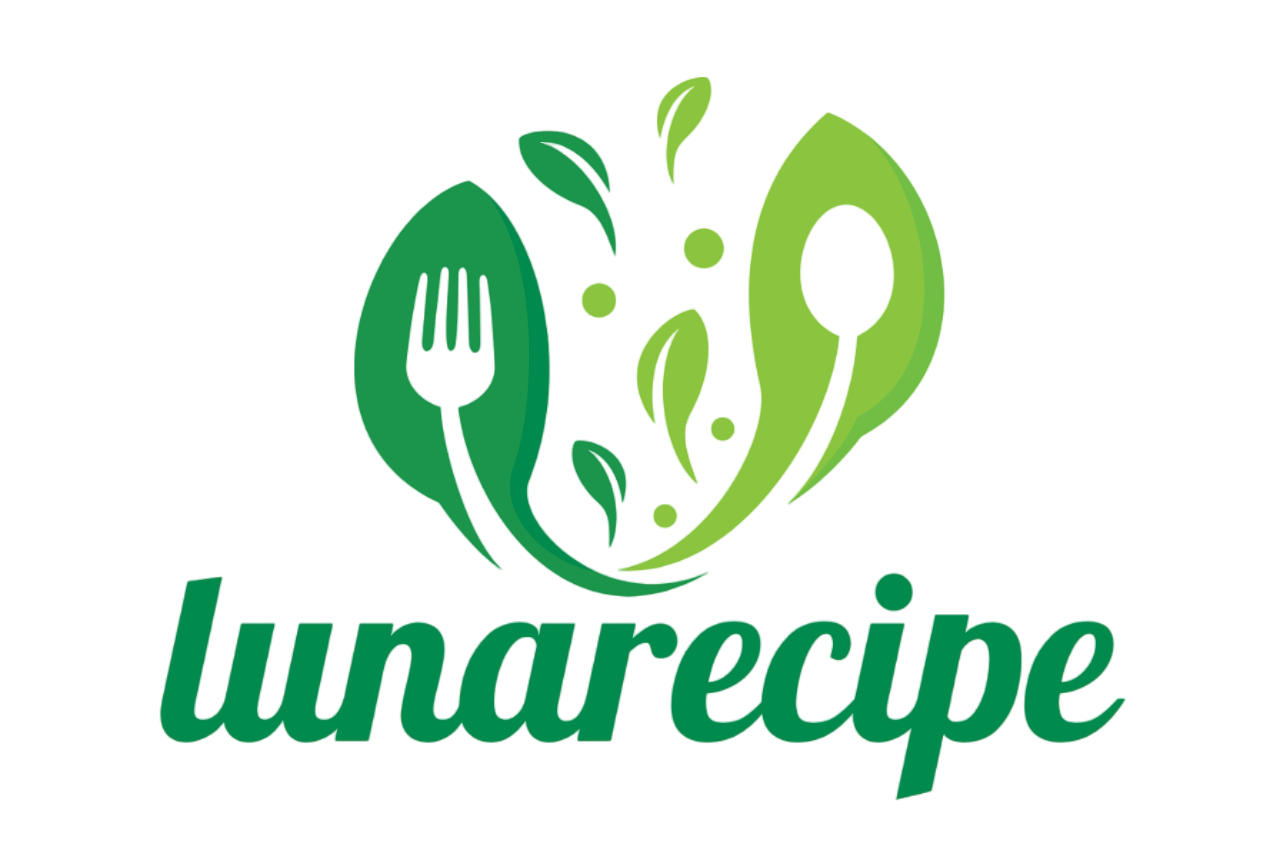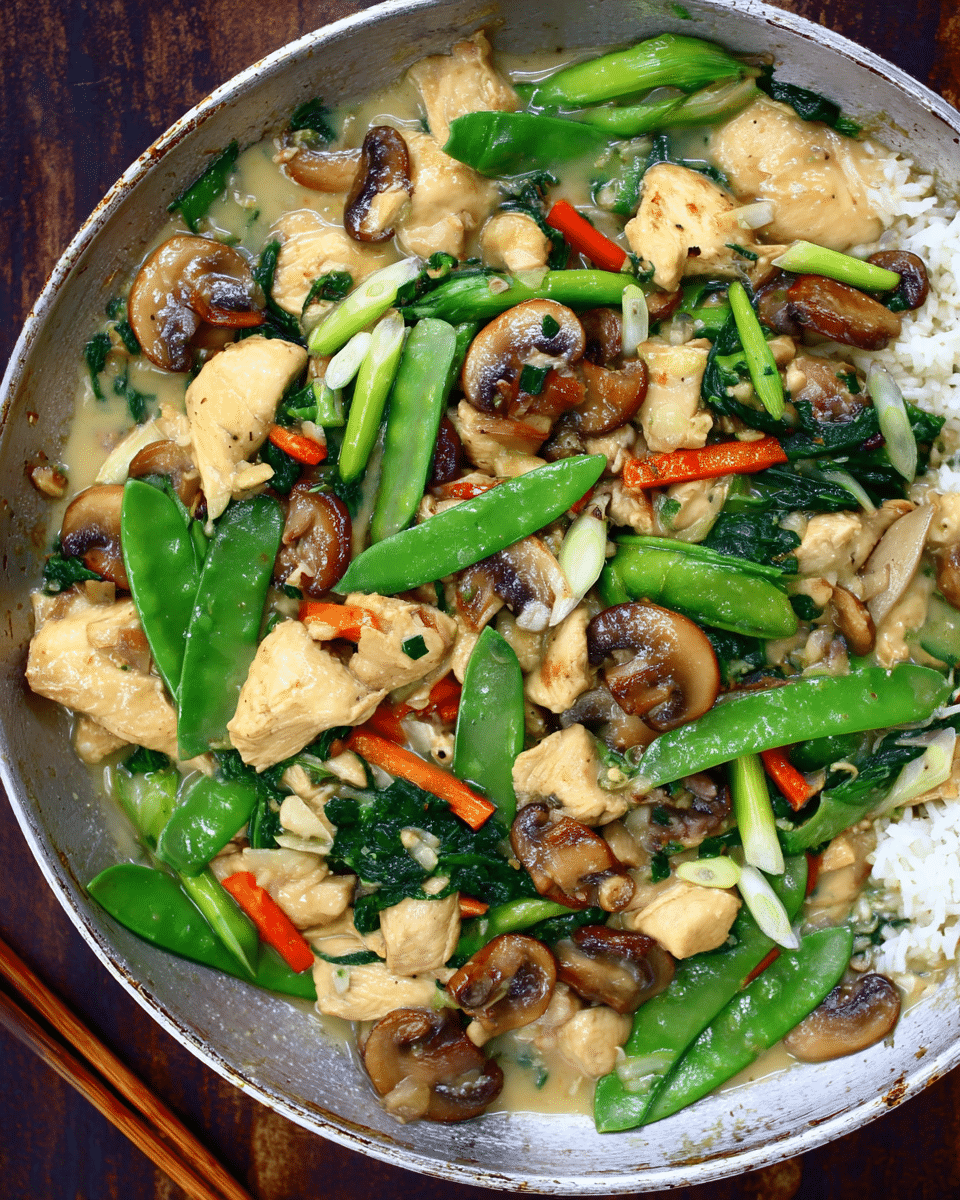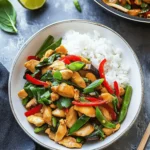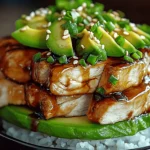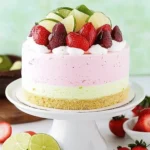Moo Goo Gai Pan is a comforting, Cantonese-American classic that brings together tender velveted chicken, crisp-tender vegetables, and earthy mushrooms, all tossed in a light, savory sauce. This dish celebrates clean flavors and quick cooking, making it a beloved favorite for busy weeknights.
Its name may sound playful, but Moo Goo Gai Pan is rooted in tradition. “Moo Goo” refers to button mushrooms, “Gai” is chicken, and “Pan” describes sliced ingredients — a literal breakdown of the simple harmony this dish delivers. With its balance of textures and flavors, it’s a wholesome, satisfying choice that brings the magic of Chinese cuisine right to your kitchen.
Full Recipe:
-
1 lb boneless skinless chicken breast
-
2 tsp cornstarch
-
1 tsp soy sauce
-
1 tsp oyster sauce
-
½ Tbsp Chinese cooking wine (Shaoxing wine)
-
½ tsp baking soda
-
¼ tsp sesame oil
-
1.5 Tbsp soy sauce
-
1.5 Tbsp oyster sauce
-
2 Tbsp Chinese cooking wine
-
½ cup chicken broth
-
3 Tbsp oil, divided
-
1 carrot, peeled and thinly sliced
-
8 oz mushrooms, sliced
-
3–4 garlic cloves, finely chopped
-
5 green onions, sliced (separate white and green parts)
-
1 cup snow peas
-
5 oz can of water chestnuts, drained
-
1 tsp cornstarch
-
1 Tbsp water
-
Sesame seeds for garnish
Directions:
-
Slice chicken thinly against the grain (¼-inch thick). In a bowl, mix with cornstarch, soy sauce, oyster sauce, Shaoxing wine, baking soda, and sesame oil. Let marinate for 30 minutes.
-
In a small bowl, whisk together all sauce ingredients and set aside.
-
Heat 2 Tbsp oil in a large wok or skillet over medium-high heat. Cook chicken in a single layer for 30 seconds per side, then stir-fry 3–4 more minutes until almost cooked. Remove from pan.
-
Add remaining oil. Stir-fry carrots, mushrooms, and white parts of green onions for 3 minutes. Add garlic and sauté for 30 seconds, then stir in water chestnuts.
-
Return chicken to pan, pour in sauce, and cook 1 minute. Mix cornstarch with water and add slurry to pan. Stir well.
-
Add snow peas and cook another minute until sauce thickens. Stir in green onion tops, garnish with sesame seeds, and serve hot with steamed rice.
Prep Time: 15 minutes | Cooking Time: 15 minutes | Total Time: 30 minutes
Kcal: 438 kcal | Servings: 4 servings
Recipe Overview
If you’re craving a lighter takeout-inspired dish that’s full of flavor, texture, and history, Moo Goo Gai Pan might just be your new go-to. This stir-fried chicken and vegetable dish is a staple in Chinese-American cuisine, known for its tender chicken, crisp-tender veggies, and delicate, savory sauce. It’s fast, fresh, and adaptable—ideal for busy weeknights or meal prep sessions. While the name may sound unfamiliar to some, the flavors are incredibly approachable, and it offers a healthier alternative to many heavy, oil-laden stir-fries.
Unlike dishes smothered in sugary sauces, Moo Goo Gai Pan lets its ingredients shine through a light, umami-forward glaze. It combines lean protein with a vibrant mix of vegetables such as mushrooms, carrots, snow peas, and water chestnuts. It’s a reminder that simple ingredients, when treated well, can create something extraordinary.
History and Origin
Moo Goo Gai Pan is a Chinese-American adaptation of a traditional Cantonese dish known as Mah Gu Gai Pin. In Cantonese, “moo goo” refers to button mushrooms, “gai” means chicken, and “pan” signifies slices or pieces. This makes the dish’s name quite literal—sliced chicken with mushrooms.
The original version of this dish, hailing from Guangdong (Canton) province in southern China, emphasizes the delicate flavors and textures favored in Cantonese cooking. Traditionally, it’s prepared using fresh shiitake or wood ear mushrooms, lily buds, and other regional vegetables, all gently stir-fried with thinly sliced chicken. The sauce is typically subtle, designed to enhance rather than overpower the ingredients.
As Chinese immigrants arrived in America in the late 19th and early 20th centuries, they adapted their culinary traditions to local tastes and ingredients. Moo Goo Gai Pan became one of the most successful examples of this fusion, often appearing on Chinese-American restaurant menus alongside other iconic dishes like General Tso’s Chicken and Sweet and Sour Pork. Over time, ingredients like button mushrooms and water chestnuts were incorporated to reflect local availability, and the sauce became slightly richer to appeal to American palates.
Despite its evolution, Moo Goo Gai Pan has retained the light, nourishing essence of its Cantonese roots, making it both a nostalgic favorite and an accessible entry point into Chinese cuisine.
Variations and Adaptations
Like many stir-fry dishes, Moo Goo Gai Pan is incredibly adaptable. Its versatility has allowed it to take on many forms across households, restaurants, and even cultures.
Protein swaps: While the classic version uses chicken breast, many cooks prefer using chicken thighs for a juicier result. In some cases, you’ll even find pork, shrimp, or tofu taking center stage. Vegetarian versions skip the meat entirely and double down on the mushrooms and other umami-rich ingredients like fermented black beans or hoisin sauce.
Vegetable variations: Depending on the season or what’s on hand, you might see Moo Goo Gai Pan made with baby corn, broccoli, bok choy, napa cabbage, or zucchini. The key is to maintain a good balance of textures—some tender, some crunchy.
Sauce differences: The sauce can be tweaked to taste. Some recipes add a splash of hoisin sauce, sugar, or ginger for a touch of sweetness or extra depth. Others increase the Shaoxing wine or sesame oil for a more robust flavor profile.
Regional spins: In fusion kitchens or Westernized Asian bistros, Moo Goo Gai Pan might be served over noodles, tucked into lettuce wraps, or even reinvented as a grain bowl with brown rice or quinoa.
No matter how it’s reimagined, the essence of Moo Goo Gai Pan lies in its freshness, lightness, and harmony of flavors.
Nutritional Information
Moo Goo Gai Pan is often celebrated as one of the more nutritious options among Chinese takeout offerings—and for good reason. It provides a balanced blend of macronutrients and is relatively low in calories and fat when compared to deep-fried dishes.
A single serving (about one-fourth of the recipe) delivers approximately:
-
Calories: 430–450 kcal
-
Protein: 40–45 grams
-
Carbohydrates: 22–26 grams
-
Fat: 17–20 grams
-
Fiber: 4–5 grams
-
Sodium: 900–950 mg
-
Sugar: 4–6 grams
This dish is high in lean protein thanks to the chicken breast and offers an array of micronutrients from the mixed vegetables, including vitamin A (carrots), vitamin C (snow peas), potassium (mushrooms), and manganese (water chestnuts). The use of a cornstarch-thickened sauce helps keep added fat to a minimum, while sesame oil contributes healthy unsaturated fats.
For those watching their sodium intake, reduced-sodium soy sauce and broth can be used without sacrificing flavor.
Serving Suggestions and Pairings
Moo Goo Gai Pan is a versatile main course that pairs beautifully with a variety of sides, whether you’re going for a traditional Chinese meal or adding your own twist.
Classic pairings include:
-
Steamed Jasmine or Basmati rice – to soak up the savory sauce
-
Fried rice – for a more indulgent, hearty pairing
-
Asian noodles – like lo mein, rice noodles, or soba
-
Egg drop soup or wonton soup – for a comforting two-course meal
-
Asian cucumber salad – crisp and refreshing for contrast
For drinks, opt for:
-
Green tea – cleansing and classic
-
Jasmine tea – fragrant and delicate
-
A dry Riesling or Gewürztraminer – complements the light flavors and soy-based sauce
-
Sparkling water with lemon or ginger – to keep the meal feeling fresh
For a low-carb option, Moo Goo Gai Pan is delicious over cauliflower rice or zoodles (zucchini noodles).
Tips and Tricks for Success
Cooking stir fry dishes like Moo Goo Gai Pan is all about timing, technique, and preparation. Here are a few expert pointers to help you achieve restaurant-quality results:
-
Slice chicken thinly and evenly: Partially freeze the chicken for 15–20 minutes to make slicing easier. Thin, uniform pieces cook faster and more evenly.
-
Don’t skip the marination (velveting): The combination of cornstarch, baking soda, and Shaoxing wine creates that signature tender, juicy chicken texture known as “velveted.”
-
Use high heat and a hot pan: Stir-frying requires quick, high-temperature cooking. Use a wok if possible, and make sure the pan is hot before adding ingredients.
-
Cook in stages: Avoid overcrowding by stir-frying the chicken and vegetables in batches. This helps preserve their texture and prevents steaming.
-
Add vegetables in the right order: Harder veggies like carrots go in first, while softer ones like snow peas should be added near the end to avoid overcooking.
-
Finish with fresh aromatics: Stirring in the green parts of scallions and sesame seeds at the end brightens the dish and adds visual appeal.
Potential Health Benefits
Beyond its nutritional profile, Moo Goo Gai Pan contains a handful of ingredients that offer additional wellness perks:
Advertisement
-
Chicken breast: An excellent source of lean protein, vital for muscle maintenance and satiety.
-
Mushrooms: Rich in B-vitamins, antioxidants, and beta-glucans that may support immune function.
-
Garlic: Known for its antibacterial properties and heart-healthy compounds.
-
Carrots and snow peas: Packed with fiber, vitamins A and C, and antioxidants that support eye and skin health.
-
Water chestnuts: While often overlooked, these are low in calories and offer a crunchy texture along with a dose of potassium and vitamin B6.
By focusing on fresh ingredients and cooking with minimal oil, Moo Goo Gai Pan fits nicely into many wellness-conscious eating patterns, including high-protein, low-fat, and low-carb diets.
Conclusion
Moo Goo Gai Pan is a wonderful reminder that comfort food doesn’t have to be heavy or complicated. With its humble roots in Cantonese cuisine and decades-long legacy in American-Chinese restaurants, this dish strikes a perfect balance between healthful ingredients and satisfying flavor.
Whether you’re looking for a nostalgic bite, a new addition to your weeknight dinner rotation, or a gateway into cooking more Asian-inspired meals at home, Moo Goo Gai Pan is a recipe worth trying—and personalizing to your heart’s content.
Whip it up once, and you might just say goodbye to takeout.
